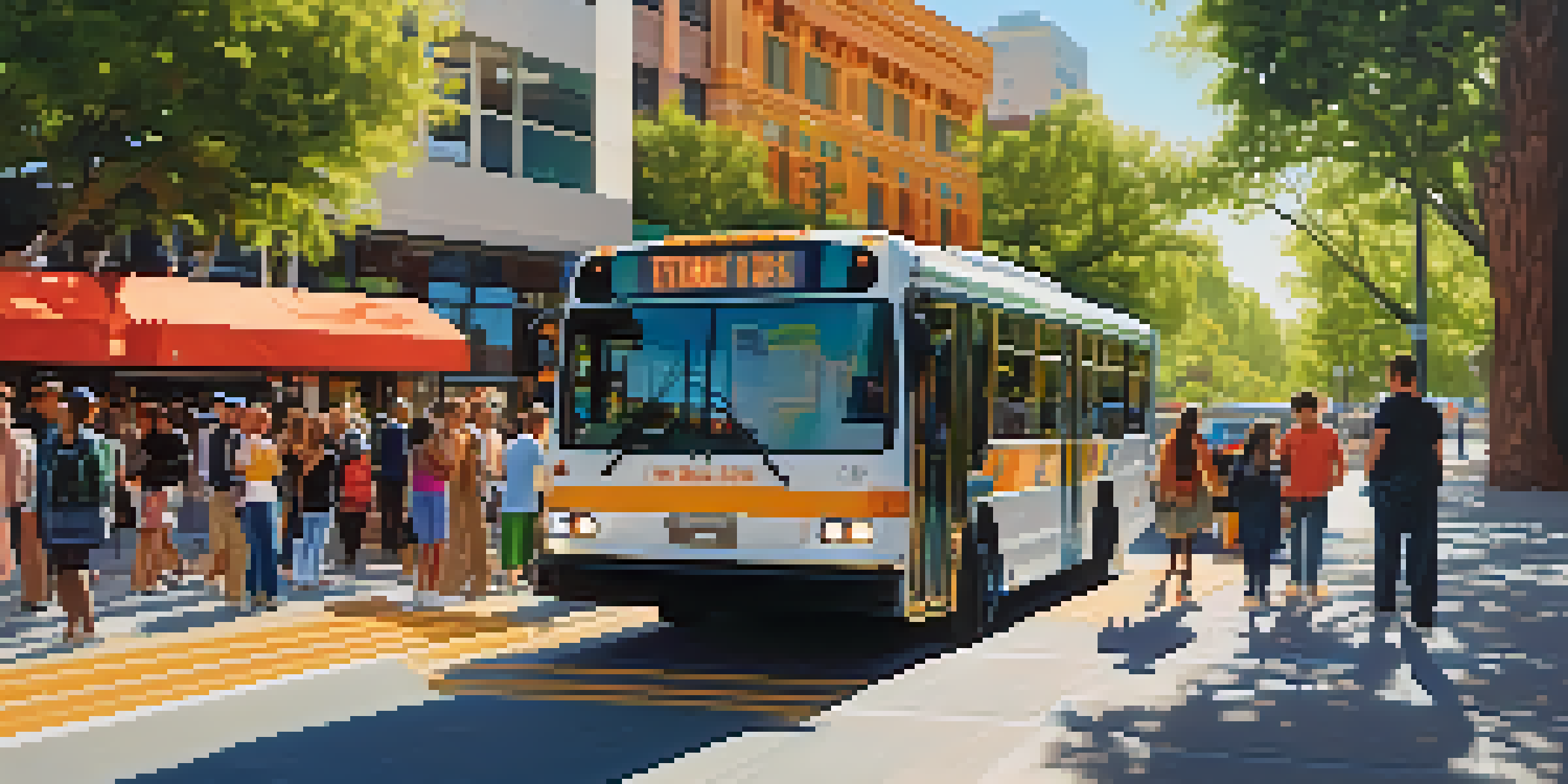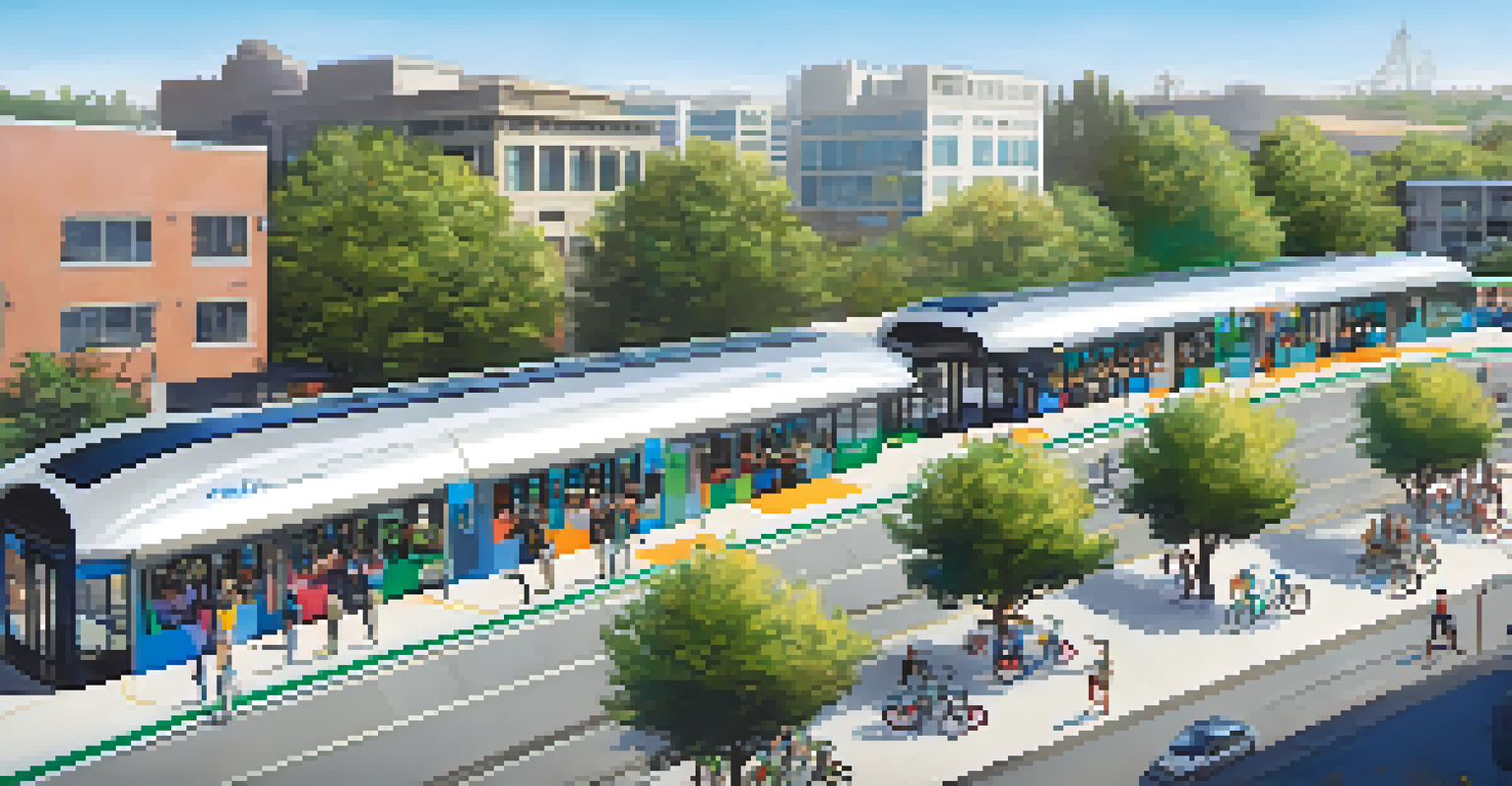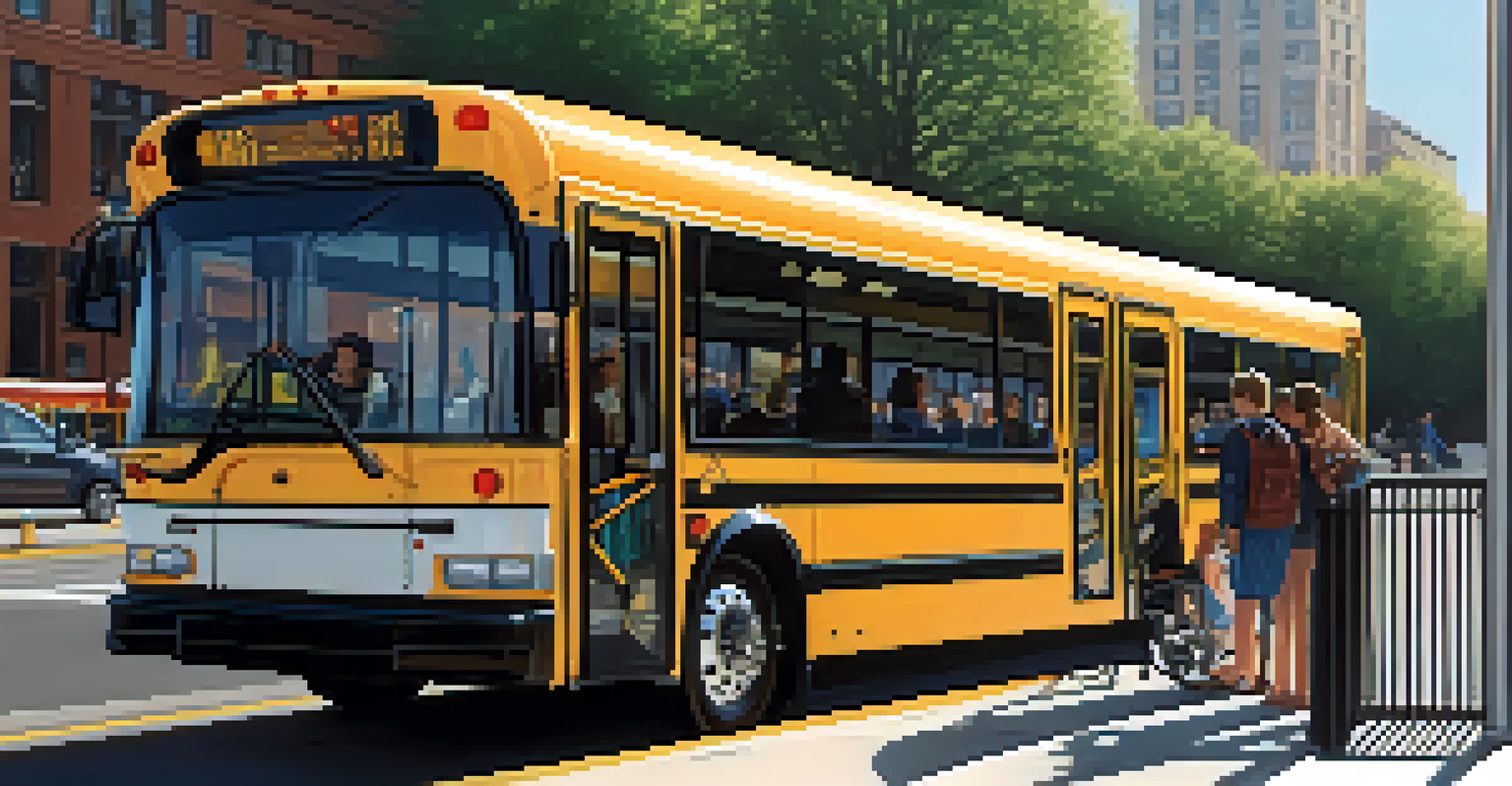San Jose's Public Transport Initiatives: A Community Perspective

Understanding San Jose's Public Transport Landscape
San Jose’s public transport system has evolved significantly over the years, adapting to the needs of its growing population. With a mix of buses, light rail, and bike-sharing programs, the city aims to provide accessible and efficient transport options. However, many residents still express concerns about connectivity and service frequency, highlighting areas for improvement.
Public transportation is a lifeline for many, connecting communities and providing essential access to jobs, education, and services.
The Santa Clara Valley Transportation Authority (VTA) operates the majority of public transit services in the area. They have been working on various initiatives to enhance user experience, including real-time tracking apps and improved signage at transit stops. These efforts aim to make public transport a more attractive alternative to driving, especially in a city where traffic congestion can be a daily struggle.
Community feedback plays a crucial role in shaping these services. Public meetings and surveys invite residents to voice their opinions, ensuring that transport initiatives align with the needs of the community. This collaborative approach fosters a sense of ownership among residents and encourages more people to consider public transit as a viable option.
Recent Initiatives Aimed at Enhancing Accessibility
One of the standout initiatives in San Jose has been the implementation of accessible transit options for people with disabilities. The VTA has introduced features like low-floor buses and paratransit services, ensuring everyone can navigate the city with ease. These changes reflect a broader commitment to inclusivity, making public transport a feasible choice for all residents.

Moreover, improvements to bus stops and light rail stations have focused on eliminating barriers. Ramps, tactile paving, and audible signals are just a few examples of how the city is working to create a welcoming environment for everyone. Such enhancements not only benefit those with disabilities but also make it easier for parents with strollers and seniors to use public transport.
Community Drives Transit Improvements
San Jose's public transport system evolves through active community feedback, ensuring services align with residents' needs.
Residents have expressed appreciation for these advancements, noting how they make a significant difference in their daily lives. The community’s feedback has been instrumental in identifying areas that needed attention, showcasing the importance of listening to the voices of those who rely on public transport.
Sustainability Efforts: A Greener Future for Transit
Sustainability is at the forefront of San Jose’s public transport initiatives, with a strong push towards reducing carbon emissions. The city has begun transitioning its bus fleet to electric vehicles, which not only cuts down on pollution but also lowers operating costs in the long run. This shift aligns with broader environmental goals and reflects a commitment to a greener future.
The best way to predict the future is to create it.
In addition to electric buses, San Jose is enhancing bike-sharing programs to encourage alternative modes of transport. By creating dedicated bike lanes and integrating bike-sharing stations with public transit hubs, the city aims to promote a culture of cycling. This not only eases congestion but also fosters healthier lifestyles among residents.
Community members have responded positively to these sustainability efforts, often expressing pride in their city’s commitment to the environment. The integration of eco-friendly practices into public transport has sparked conversations about how individuals can contribute to a more sustainable community, emphasizing the collective responsibility we all share.
Community Engagement: Building Trust and Participation
Engaging the community is essential for the success of public transport initiatives in San Jose. The VTA actively hosts workshops and forums where residents can learn about upcoming projects and share their thoughts. This transparent approach helps build trust and ensures that the voices of those using public transit are heard.
Moreover, social media has become a powerful tool for fostering engagement. The VTA uses platforms like Twitter and Facebook to share updates and gather feedback, making it easier for residents to stay informed and involved. This digital outreach complements traditional methods, reaching a wider audience and encouraging more participation.
Focus on Accessibility and Inclusivity
The VTA's initiatives prioritize accessible transit options, making public transport usable for everyone, including those with disabilities.
By prioritizing community engagement, San Jose is not only improving its public transport system but also strengthening the bond between residents and local government. This partnership fosters a sense of shared responsibility, motivating individuals to advocate for the services they rely on daily.
Challenges Faced by San Jose's Public Transportation System
Despite the notable progress, San Jose's public transport system faces several challenges that need addressing. One major issue is the limited coverage in certain neighborhoods, leaving some residents without easy access to public transit. This lack of connectivity can discourage individuals from using public transport, ultimately impacting ridership numbers.
Another challenge is the ongoing maintenance of aging infrastructure. Many bus stops and light rail stations require upgrades to meet current standards and ensure a comfortable experience for riders. Addressing these maintenance issues is crucial for retaining existing users and attracting new ones to public transport.
Community members often voice their concerns about these challenges, emphasizing the need for consistent improvements. Their feedback is invaluable in highlighting areas that require immediate attention, helping the VTA prioritize projects that will have the most significant impact on users.
Future Plans: Expanding and Innovating Public Transit
Looking ahead, San Jose has ambitious plans to expand and innovate its public transport offerings. Proposed projects include new light rail lines and enhanced bus rapid transit routes that would significantly increase connectivity across the city. These expansions aim to make public transport a more attractive option for commuters and reduce reliance on personal vehicles.
In addition to physical infrastructure, technology will play a key role in the future of public transport in San Jose. Innovations like contactless payment systems and improved mobile apps are set to streamline the user experience, making it easier for residents to plan their journeys. Such advancements align with the tech-savvy nature of the city, appealing to a younger demographic.
Sustainability Efforts Shape Future
San Jose is transitioning to electric buses and enhancing bike-sharing programs to promote eco-friendly transport options.
Community input will remain essential in shaping these future plans. By continuing to involve residents in the decision-making process, San Jose can ensure that its public transport system evolves in a way that truly meets the needs of its diverse population.
Conclusion: The Role of Community in Transport Initiatives
San Jose's public transport initiatives exemplify the importance of community involvement in shaping effective services. By listening to residents and incorporating their feedback, the city can create a system that truly serves the needs of its populace. This collaborative effort fosters a sense of belonging and encourages more people to utilize public transit.
As San Jose continues to innovate and expand its public transport options, the role of community engagement will only grow in significance. Residents are not just users of the system; they are active participants in its development. Their insights help guide decisions and ensure that public transport remains a viable choice for everyone.

In essence, the future of San Jose's public transport hinges on a shared commitment to progress and community involvement. Together, residents and local authorities can pave the way for a more interconnected, sustainable, and accessible city.